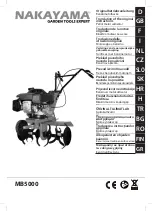
27
of a serial signal or the closing of the relative digital input.
In this condition, the controller will display the various paramenetrs of the unit.
5.2.3 Enabling the unit
5.2.3 Enabling the unit
5.2.3 Enabling the unit
5.2.3 Enabling the unit
5.2.3 Enabling the unit
The unit can be put into service from stand-by mode after an external permissive has been closed, when the “on/
off” key is pressed or by means of a serial signal.
The controller outputs controlling the various sections of the chiller unit are activated in accordance with the
operation time settings. If the “on” key is pressed before the closing of the external permissive, the display shows
the permissive not closed.
The compressors can start only if one of the two pumps is already working.
5.2.4 Pump control (ST unit only)
5.2.4 Pump control (ST unit only)
5.2.4 Pump control (ST unit only)
5.2.4 Pump control (ST unit only)
5.2.4 Pump control (ST unit only)
When the unit is switched on, circulation pump control (if prearranged) is automatically enabled.
If two pumps have been prearranged (one acting as a reserve for the other), their outlets are cyclically activated
when the pump rotation time setting has been reached.
At the switchover from one pump to the other, both will operate for a few seconds to ensure the continuity of
water flow throughout the system.
When the unit sets from operating status to stand-by by means of the opening of the external permissive, pump
shutdown of ST unit will be delayed for a certain time after the shutdown of the last compressor, in order to take
full advantage of thermal accumulation.
5.2.5
5.2.5
5.2.5
5.2.5
5.2.5 Compressor start-up
Compressor start-up
Compressor start-up
Compressor start-up
Compressor start-up
The controller allows compressor start-up if the flowmeter input is closed by the time of start-up delay. In the
event that the flowmeter input is opened after compressor start-up, it will in any case be delayed before chiller
shutdown.
An alarm will be displayed in the event of unit shutdown due to the opening of the flowmeter input.
Compressor start-up, shutdown and step control will be carried out by the controller according to system requirements
and selected operations.
5.2.6 Chiller operation
5.2.6 Chiller operation
5.2.6 Chiller operation
5.2.6 Chiller operation
5.2.6 Chiller operation
During chiller operation, the controller has the task of lowering water temperature and keeping it as close to the
selected set point as possible.
In the standard version the control acts on input water. The control of compressor outlets and relative step
capacity will depend from the difference between the input water temperature and the set point.
5.2.7 Heat pump operation
5.2.7 Heat pump operation
5.2.7 Heat pump operation
5.2.7 Heat pump operation
5.2.7 Heat pump operation
During heat pump operation, the controller has the task of raising water temperature and keeping it as close to
the selected set point as possible.
The control of compressor outlets and relative step capacity will be carried out according to the difference
between the inlet water temperature and the temperature setting.
5.2.8
5.2.8
5.2.8
5.2.8
5.2.8 Evaporator antifrost
Evaporator antifrost
Evaporator antifrost
Evaporator antifrost
Evaporator antifrost
In the event that the output water temperature from a heat exchanger is lower than the antifrost limit value, the
controller will cut in to shut down compressor operation in the chiller circuit, and will give the antifrost alarm.
Manual cancelling of alarms and compressor restart will only be possible when the water temperature at the heat
exchanger outlet causing the alarm is equal to or greater than the antifrost limit value, increased by the antifrost
differential.
The antifrost alarm will automatically shut down the entire unit, and therefore all compressors in the chiller circuit,
in cases in which there is a single exchanger in the hydraulic circuit.
The antifrost alarm will only appear when the unit is on (but not when in stand-by mode).
Содержание KAPPA V 2001
Страница 69: ......
















































